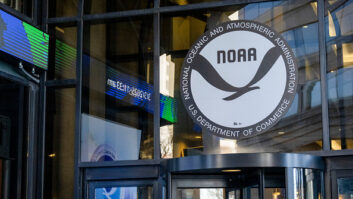The following is excerpted from theAlabama Broadcasters Association�sweekly e-newsletter, Monday Morning Coffee and Technical Notes. Thanks to Larry Wilkins, who puts together the content and has shared it with Radio magazine readers. To subscribe to the newsletter, send an email to[email protected], and he will add you to the database.
�
FM TRANSLATOR WINDOW
As a last minute reminder, the FCC will open an auction filing window July 26 to Aug. 2, during which licensees of Class C and D AM stations may file applications to establish new FM translator stations to rebroadcast their signals.
�
NATIONWIDE EAS TEST SCHEDULED
The Federal Emergency Management Agency has scheduled the 2017 national EAS test for Wednesday Sept. 27 at 2:30 p.m. (ET). The test will be conducted in the same way it was last year, with both English and Spanish language text and audio. Total duration is expected to be about one minute.
Al Kenyon IPAWS National Test Lead, speaking with Sean Donelan on the SBE EAS list server said “This test will be originated and distributed in the same manner as the 2016 National Test via IPAWS only. [All] stations are expected to receive the NPT message from IPAWS or off-air and then to relay the NPT message on-air using their normal studio EAS equipment.”
As with the test in 2016 all EAS participants will be required to report reception and retransmission to the FCC using the EAS Test Reporting System database, otherwise known as ETRS. Since several updates to the system have been made since last year’s test the Commission is asking users to re-register for ETRS through the FCC’s CORES registration system. As of today the system is not yet operating as updates are being made. Once it is ready the FCC will issue details on registering. The ABA Engineering Academy will send out complete information concerning the registration procedure.
�
EAS MONITOR SOURCES:
The FCC still requires all EAS participants to monitor two sources in addition to the IPAWS feed. The required monitor sources for your operation are listed in the State EAS Plan. If you cannot monitor the assigned sources(s) due to technical reasons contact the State Emergency Communication Committee or the State Broadcasters Association and they can assign you an alternate source. Also the local area filter should contain counties in your service area.
The commission recently fined a station $66,000 for various violations including they had programmed its EAS equipment messages for a different geographic area than that served by the station itself.
�
WEEKLY FCC RULE REVIEW: STATION LOG
Although the FCC has eliminated a great deal of the logging requirements, they still require a Station Log. This log should include the following items:
- A record of all required EAS receptions and activations both from the two required monitor sources and the IPAWS feed. A notation of EAS equipment taken out of service for repairs and restoration must also be included.
- A record of any malfunction or extinguishment of tower lighting, or any notification made to the FAA of the same, and a log entry should be made when normal functioning resumes.�
- A record of each failure, out-of-tolerance condition, or corrective action (including calibration of automatic devices) made to the transmission system equipment, including monitoring and control devices.
These logs are required to be reviewed and signed by the Chief Operator each week and retained for a period of two years.







